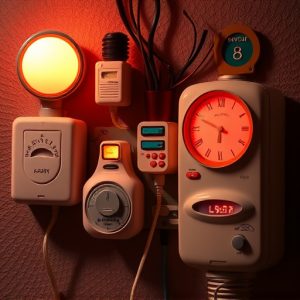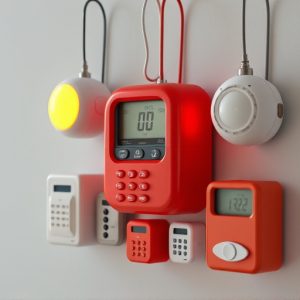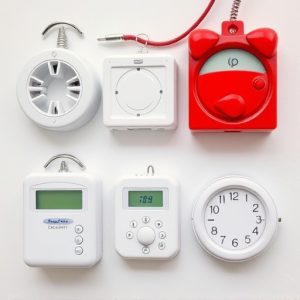Maximizing Personal Safety: High-Decibel Wearable Alarms Explained
Wearable alarms with loud sirens (Maximum Decibel Personal Alarms) offer powerful personal safety fo…….
Wearable alarms with loud sirens (Maximum Decibel Personal Alarms) offer powerful personal safety for individuals in isolated areas. These devices, ranging from 105-120 dB, deter threats and draw attention when activated, providing immediate warning signals. Key features include water resistance, LED lights, and compliance with legal guidelines to ensure safe and effective use in various scenarios.
In today’s world, personal safety is paramount. Wearable alarms with loud sirens offer a discreet yet powerful solution for self-protection. This comprehensive guide explores the effectiveness of these devices, known as maximum decibel personal alarms, in enhancing individual safety. We delve into the science behind sound and its impact on attracting attention quickly. Features to consider when choosing the right alarm are also discussed, ensuring peace of mind for users. From water resistance to LED lights, every aspect matters. Additionally, we address legal implications and best practices for responsible usage.
- Understanding Wearable Alarms: A Personal Safety Net
- The Power of Sound: Decibels and Their Impact
- Features to Consider: From Water Resistance to LED Lights
- Target Audiences: Who Needs a High-Decibel Alarm?
- Legal Implications and Best Practices for Usage
Understanding Wearable Alarms: A Personal Safety Net
Wearable alarms with loud sirens, often in the form of small, discrete devices, offer a powerful personal safety net for individuals in various situations. These alarms are designed to be easily accessible and provide an immediate warning signal when activated. The key feature that sets them apart is their ability to emit high-decibel sounds, typically ranging from 105 to 120 decibels, rivaling the noise of a construction site or emergency vehicle siren. This maximum decibel level ensures that the alarm can be heard over ambient noise, drawing attention and potentially deterring potential threats.
For personal safety, these alarms are particularly useful for individuals who may be at risk while alone or in isolated areas, such as late-night joggers, outdoor enthusiasts, or those living in high-crime neighborhoods. The portability of wearable alarms allows users to carry them hands-free, ensuring they’re always ready when needed. With a simple activation, the loud siren can startle and alert bystanders, providing precious time for an individual to escape or seek help. This personal safety measure is a valuable asset for anyone prioritizing their well-being in today’s world.
The Power of Sound: Decibels and Their Impact
The power of sound in personal safety is undeniable, especially when it comes to wearable alarms with loud sirens. The human ear can detect sounds ranging from as low as 30 decibels (dB) up to approximately 120 dB before permanent damage occurs. Personal alarms designed for emergency situations are typically built to reach maximum decibel levels, often exceeding 100 dB. This intense auditory stimulus serves as a strong deterrent and warning signal, ensuring that the wearer and those around them are alerted promptly in case of danger.
Decibels measure sound intensity, with each increase of 10 dB doubling the perceived loudness. In the context of personal alarms, this means that even a small increment in decibel level can make a significant difference in effectiveness. A 120-dB alarm is approximately as loud as a jet engine at close range, making it impossible to ignore. This high-intensity sound not only draws attention but also helps to override background noise, ensuring the alert reaches all listeners, regardless of their location or the ambient environment.
Features to Consider: From Water Resistance to LED Lights
When shopping for wearable alarms with loud sirens, there are several features to consider that can enhance your personal safety. One key feature is water resistance, ensuring your alarm remains functional even during outdoor activities or unexpected submersion. This is particularly important for those who enjoy swimming, surfing, or simply living in regions with high rainfall.
Additionally, look for alarms equipped with LED lights. These not only provide visibility in low-light conditions but also serve as a secondary warning signal to attract attention quickly. The combination of a powerful maximum decibel personal alarm and bright LED lighting offers multi-layered safety, especially in emergency situations or when you need to deter potential threats swiftly and effectively.
Target Audiences: Who Needs a High-Decibel Alarm?
Legal Implications and Best Practices for Usage
Wearable alarms with loud sirens, designed for personal safety, must adhere to strict legal guidelines and best practices to ensure their effectiveness and prevent misuse. The maximum decibel level of these devices is a critical consideration; many countries have set legal limits on the volume to protect users’ hearing and public peace. Exceeding these limits can result in fines or other legal repercussions.
Best practices for usage include ensuring the alarm’s sound stands out from ambient noise, avoiding unnecessary triggers that could lead to false alarms, and respecting local regulations regarding use times and locations. Users should also be aware of their surroundings; while these alarms provide vital protection, they must be used responsibly to avoid causing distress or disruption to others.
Wearable alarms with loud sirens, capable of reaching maximum decibels, offer unparalleled personal safety, especially in emergency situations. By understanding the impact of sound, considering key features like water resistance and LED lights, and recognizing suitable target audiences, users can leverage these devices effectively. Adhering to legal implications and best practices ensures responsible usage, enhancing peace of mind for those prioritizing personal alarm safety.


